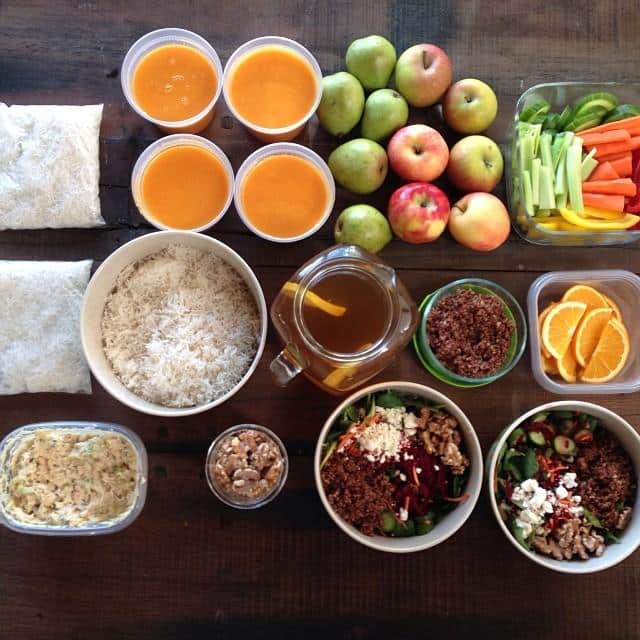Sign up for restaurant insights
When you hear the phrase “lab-grown meat,” you might think of the food in futuristic movies. There’s no need to wait for science to catch up with sci-fi — researchers in the United States have already found a way to grow meat in a lab. Soon, you’ll even be able to serve it to customers at your restaurant; in 2023, the FDA approved production for the first-ever cultured chicken products.
While full commercial approval is still in progress, lab-grown meat has a promising future. If you’re interested in adding cultured beef, chicken, pork, or seafood to your restaurant menu, now’s a great time to start learning about the technology, science, and safety procedures behind this revolutionary food development.
What is lab-grown meat?
Lab-grown meat is meat that’s grown from a small collection of animal cells. The German author Kurd Lasswitz introduced the concept in his 1897 novel, “Auf Zwei Planeten.” The first tissue-engineering procedure was patented in 1999, and in 2001, NASA cultivated goldfish and turkey meat while investigating possible food sources for astronauts.
The most recent development happened in June of 2023, when the FDA granted regulatory approval for select cell-cultivated meats to UPSIDE Foods (formerly Memphis Meats) and GOOD Meat. Currently, these companies are permitted to provide cultured chicken to a limited number of restaurants in the United States. It’s safe to assume that more companies will soon enter the market; Finless Foods, Mosa Meat, and Aleph Farms are three likely candidates.
How do you grow meat in a lab?
Scientists begin cultivating meat by taking stem cells from an egg or healthy, living animals. After rounds of testing, they select the cells with the best potential and resilience.
The actual meat-growing process happens in a facility that resembles a brewery. The cells go into giant vats filled with a liquid mix of nutrients, including proteins, fatty acids, vitamins, fiber, and minerals. In this nourishing environment, the cells begin to grow naturally — they divide just as they would in nature, creating more cells.
According to GOOD Meat, the growing process takes about 4 to 6 weeks; UPSIDE Foods completes the process in 2 to 3 weeks. Lab technicians then harvest the meat and process it into a more familiar form. GOOD Meat uses 3D printing, extrusion, and molding technology to achieve the right texture and shape. The result is something similar to chicken nuggets, which means this food style works for fast food and fast-casual dining.
Benefits of lab-grown meat
If lab-grown meat gains traction among consumers, it has the potential to create significant benefits:
- Reduced consumption of animals. Cultivated chicken is often called “no-kill” meat because it uses cells from eggs or living animals. Both GOOD Meat and UPSIDE Foods put the original extracted cells into a cell bank for future use, reducing the need for future extractions.
- Less contamination. Unlike conventional meat, lab-grown products aren’t at risk of contamination from fecal products, cleaning chemicals, and other substances. The tightly controlled process could also be helpful for customers who need to avoid allergens; as long as cultivated products aren’t exposed to wheat, they’ll count as gluten-free meat.
- No animal byproducts. Because production facilities only grow meat, they don’t have to waste or dispose of animal byproducts, including organs and bones.
- Increased meat supply. Laboratories can grow meat in just a few weeks, which makes it easier to meet the meat-consumption and protein needs of an expanding population.
The cultured meat industry is still in its infancy — it may be some time before these products are available to more restaurants and grocery stores. If your customers are open to cultivated meat products, however, it’s worth keeping an eye on the FDA’s approval process. Lab-grown chicken and beef could be viable alternatives to plant-based meat from brands such as Impossible Foods. These alternative meats may even be appealing to people who eat a vegan diet due to concerns about factory farming, animal welfare, or livestock farming.
Is lab-grown meat safe to eat?
According to the FDA’s pre-market consultations for UPSIDE Foods and GOOD Meat, lab-grown meat is safe to eat. Though it’s not identical to animal tissue, the agency describes the product as “similar in composition and nutritional characteristics to conventional poultry products.” As with real meat, cultured meat must be properly stored in refrigerated areas for safety.
To ensure every new cultured meat is appropriate for human consumption, the FDA uses a set of safety standards similar to those used for other food-production facilities. The FDA regulates the process from cell collection to harvest. At that point, the USDA takes over and regulates processing, packaging, labeling, and distribution.
From an environmental perspective, lab meat may or may not be a safer alternative to conventional meat production and traditional animal meat. Proponents claim cultivated meat will be easier on the planet than animal agriculture — after all, using standard meat production methods, 1 kilogram of beef results in 99.48 kg of greenhouse gas emissions. Turning to lab-grown meat can be more sustainable.
Growing meat in a lab may reduce that impact, but some experts are unconvinced. They’re concerned that commercial cell cultivation may result in equally high energy usage and emissions due to purification requirements, cell feeding, and cell-bank maintenance.
While lab-grown protein is safe to eat, it may come with a steep price tag. It’s expensive to cultivate meat, especially at scale; even with government and private funding, the cost may be higher than traditional meat. On the plus side, the short growth period has the potential to guarantee a steady supply and improve restaurant inventory management.
Stay up to date on restaurant trends with Grubhub
The restaurant industry is constantly changing in response to customer demands and advancements in technology — lab-grown meat is only one of the latest trends. If you want to stay ahead of the curve, consider partnering with Grubhub. In addition to innovative restaurant delivery and marketing services, we provide helpful tips, tricks, and resources that help your establishment stay up to date.Ready to prepare your restaurant for future industry developments? Get started with Grubhub for free today.





